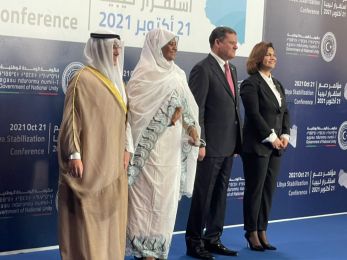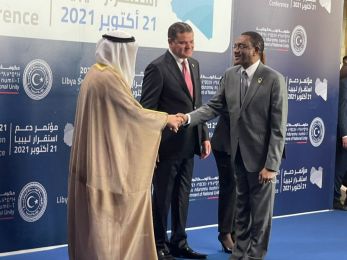How data can inform policy to address challenges faced by internally displaced people in CAR: World Bank Blog (By Harriet Kasidi Mugera, Gervais Chamberlin Yama and Jonathan Lain)
Bangui, CAR (PANA) - Decades of division and conflict have left the Central African Republic (CAR) with severe development challenges and entrenched poverty among its population.
Almost 7 out of 10 Central Africans live on less than $2.15 (2017 PPP) per day, and more than half cannot afford to feed themselves adequately even if they devote their entire household budget to food.
Development policies need to support the most vulnerable Central Africans, especially those who have been forcibly displaced by conflict.
The outbreak of conflict in 2012 led to almost one million Central Africans being internally displaced.
Despite some stabilization in the security situation since then, sporadic violence continues to displace people in certain parts of the country.
Today, there are around 500,000 internally-displaced persons (IDPs) in CAR – more than 8% of the country’s population.
Of these, around 3 in 10 live in official IDP camps.
Policies that can alleviate the unique hardships that different types of IDPs may face are therefore critical. Yet, collecting reliable data on IDPs to guide such policies is difficult.
By definition, displaced people are moving, so innovative methods are needed to sample them, while questionnaires must be tailored to capture their experiences fully.
In CAR, the national statistical office – Institut Centrafricain des Statistiques et des Etudes Economiques et Sociales (ICASEES) – has invested heavily in collecting the microdata needed to assess poverty and living standards, including for the country’s vast internally displaced population.
In 2021, ICASEES implemented the Enquête Harmonisée sur le Conditions de Vie des Ménages (EHCVM), with support from the World Bank and the United Nations High Commissioner for Refugees (UNHCR).
This is emblematic of the growing collaboration between the World Bank and UNHCR, forged through the Joint Data Centre on Forced Displacement, to address the urgent global need for data on displacement.
Using unparalleled methods, the 2021 EHCVM explicitly integrated IDPs from official camps into the full sample frame. The survey also included a specialized questionnaire module – following the recommendations of the Expert Group on Refugee and IDP Statistics (EGRIS) – to identify IDPs living outside official camps too.
Drawing on this unprecedented data-collection effort, the World Bank’s 2023 poverty assessment for CAR provides important insights into the distinct challenges that confront different types of IDPs.
Overall, the poverty rate at the national line for displaced Central Africans living in camps is 76.3%; significantly higher than the rate for non-IDP households (68.6%) and the rate for out-of-camp IDPs (68.0%) – that is, households living outside of camps where IDPs reside.
Therefore, while those in camps are clearly worse off, not all IDP experiences are the same. Similar patterns emerge for the share of people living in food poverty – those whose household budget does not provide enough calories even if it is entirely devoted to food.
A different picture emerges for non-monetary poverty. Echoing the story on monetary poverty, the share of people who are deprived in terms of educational enrolment, educational attainment, and electricity access is highest for those living in camps. Yet, the opposite is true for water and sanitation – those in camps have better access to these particular services than non-IDP households and IDP out-of-camp households.
In-camp households are also much more likely to receive certain types of social protection, including food assistance and care for infants and pregnant women.
While living in camps is generally associated with higher poverty and worse human capital outcomes, there are certain services that can be more easily and directly supplied there.
If IDPs in camps can access certain services better, why are their monetary poverty outcomes worse?
For one, IDPs in camps have experienced more exposure not only to conflict shocks, but also price and climate shocks – these could be part of the reason they moved in the first place.
Some 94.5% of Central Africans living in camps reported being affected by a negative shock in the three years prior to the survey. These shocks lead to negative coping strategies, including reducing food consumption, while being forced to move also causes IDPs to lose assets.
Yet even after moving, IDPs in camps have far more limited livelihood opportunities compared to both non-IDPs and out-of-camp IDPs.
Central Africans living in camps are less likely to be working and those that do work are less likely to be engaged in agriculture, the country’s main employment sector.
Therefore, finding ways to address the disproportionate constraints on the inputs and assets needed for livelihoods faced by those living in camps presents a clear policy priority.
The 2021 EHCVM and the poverty assessment demonstrate the power of generating reliable and timely evidence for guiding policies to support IDPs.
Recognizing that not all IDPs face the same challenges, policy measures must be tailored accordingly.
Moreover, this blueprint can help build sustainable systems to ensure systematic inclusion of displaced populations in future data collection in CAR, as well as in other countries.
This is especially important given growing efforts – including through the second phase of the Harmonizing and Improving Statistics in West and Central Africa project – to improve the data landscape across the Western and Central Africa region.
By better understanding the specific challenges and opportunities facing IDPs, policies can be better tailored and therefore more effective in improving their lives and helping lift them out of poverty.
-0- PANA AR/RA 7Feb2024






